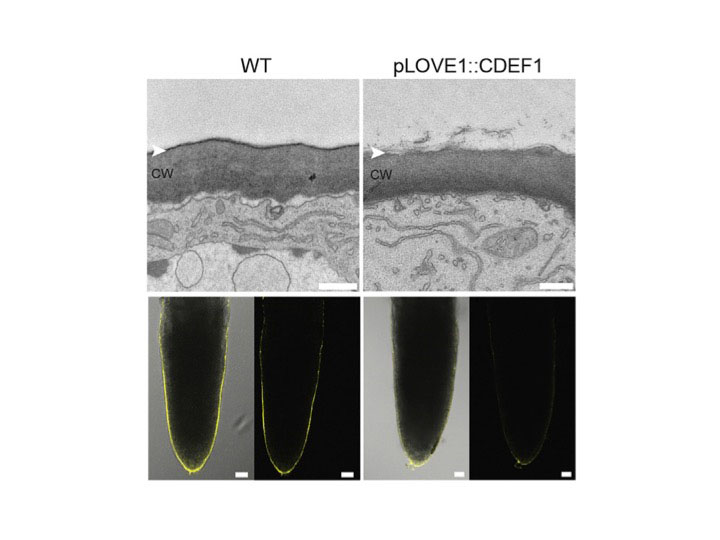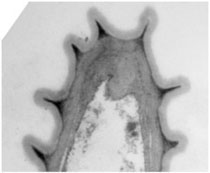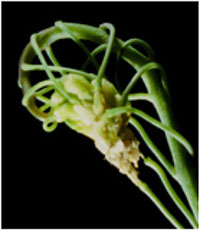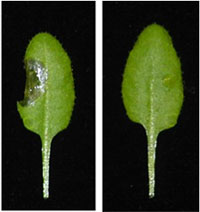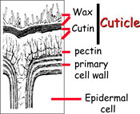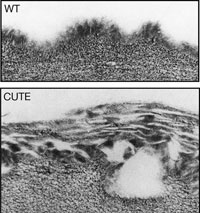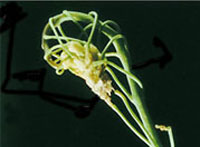The Plant Cuticle
Land plants have to protect themselves against hostile environmental conditions, such as water loss in a low humidity environment, including during drought stress. The cuticle is a lipid-rich surface structure formed in continuation with the cell wall of above-ground organs in primary growth stage, such as leaves, fruits and floral organs. It plays an essential role as diffusion barrier protecting plants against abiotic stresses. In addition, the cuticle regulates the fluxes of signal molecules important for the communication with microorganisms and insects and gives mechanical strength to the surface of the epidermal cells.
Composition, structure and function of cutin and other cell wall polyesters
The structural component of the plant cuticle is cutin, an aliphatic polyester. The aim of our studies is to better understand the biosynthesis and assembly of cutin that has a different composition and structure in different organs and developmental stages. Furthermore, we wish to relate cutin structure to the properties of the cuticle and its role in different biological processes. Based on a genetic approach in Arabidopsis leading to the isolation of mutants having a permeable cuticle, we have characterized several genes involved in cutin formation and function. Currently, we extend our research to organs and cell types for which polyester depositions in the cell walls have not yet identified.
Towards understanding the relation between the composition, structure and the function of the plant cuticle
During recent years, we have used Arabidopsis as a model system for the identification of genes involved in the biosynthesis of cutin, the structural polyester of the cuticle. A number of Arabidopsis mutants having a permeable cuticle have been isolated using dyes that penetrate the leaves or petals only when the cuticle is disrupted. Characterization of permeable cuticle mutants lead also to a better understanding of the different roles of the plant cuticle in stress protection and plant development.
A short overview over the different research projects is given below:

